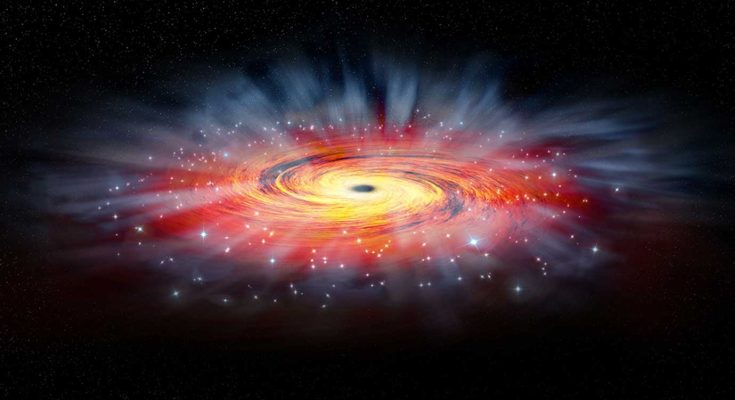Black holes are some of the most mysterious and fascinating objects in the universe. These cosmic phenomena, with gravitational pulls so strong that not even light can escape, challenge our understanding of physics and space-time. Recent discoveries, including the first-ever image of a black hole and advancements in gravitational wave detection, have provided new insights into their nature. But what exactly are black holes, how do they form, and why are they so crucial to our understanding of the universe?
What is a Black Hole?
A black hole is a region in space where gravity is so intense that nothing—not even light—can escape its pull. This occurs because the mass of a black hole is concentrated into an incredibly small space, creating what is known as a singularity.
Key features of a black hole include:
- Event Horizon: The boundary beyond which nothing can return once crossed.
- Singularity: The point of infinite density at the center.
- Accretion Disk: A swirling disk of matter that falls into the black hole, emitting high-energy radiation.
How Do Black Holes Form?
Black holes can form through several processes, but the most common formation mechanism is the collapse of massive stars at the end of their life cycles. Here’s how it happens:
- Stellar Collapse: When a massive star exhausts its nuclear fuel, it can no longer support itself against gravity. If the core is sufficiently massive, it collapses under its own weight, forming a black hole.
- Supernova Explosion: During the collapse, the outer layers of the star explode in a violent supernova, leaving behind a dense core that becomes a black hole.
- Merging of Neutron Stars: Some black holes also form when two neutron stars collide and merge, producing gravitational waves detectable by observatories like LIGO and Virgo.
Types of Black Holes
Black holes come in different sizes, classified into three main categories:
1. Stellar-Mass Black Holes
These black holes have masses ranging from a few to several dozen times that of the Sun. They are formed from the collapse of massive stars and are commonly found in binary systems.
2. Supermassive Black Holes
Found at the centers of galaxies, these giants have masses ranging from millions to billions of times that of the Sun. The supermassive black hole at the center of our Milky Way, Sagittarius A*, has a mass of about four million Suns.
3. Primordial Black Holes
Theoretical black holes that may have formed in the early universe due to extreme density fluctuations. They are still hypothetical, but they could provide clues about the nature of dark matter.
Observing Black Holes
Since black holes do not emit light, scientists rely on indirect methods to study them. Here are some key techniques:
1. Gravitational Lensing
When light from a background object passes near a black hole, its intense gravity bends the light, magnifying and distorting the image. This effect, called gravitational lensing, provides evidence of black holes’ presence.
2. X-ray Emissions
Matter falling into a black hole heats up and emits X-rays. Observatories like NASA’s Chandra X-ray Observatory detect these emissions to locate black holes.
3. Gravitational Waves
When two black holes merge, they generate ripples in space-time, known as gravitational waves. Instruments like LIGO and Virgo have detected these waves, confirming Einstein’s predictions and improving our understanding of black holes.
4. The Event Horizon Telescope (EHT) Image
In 2019, astronomers captured the first-ever image of a black hole using the Event Horizon Telescope (EHT). This historic achievement provided direct visual evidence of a supermassive black hole in the galaxy M87.
The Role of Black Holes in the Universe
Black holes play a crucial role in shaping galaxies and cosmic evolution:
- Regulating Galaxy Growth: Supermassive black holes influence the formation and evolution of galaxies by expelling powerful jets of radiation and matter.
- Driving Extreme Physics: Studying black holes helps physicists test theories of gravity, quantum mechanics, and space-time.
- Potential for Wormholes: Some scientists speculate that black holes could be linked to wormholes, hypothetical tunnels in space-time that could allow faster-than-light travel.
The Future of Black Hole Research
As technology advances, future missions will provide even deeper insights into black holes. Upcoming space telescopes like the James Webb Space Telescope (JWST) and next-generation gravitational wave detectors will help scientists study black holes with unprecedented precision. Additionally, advancements in quantum gravity research may one day unravel the true nature of black hole singularities.
Conclusion
Black holes are not just cosmic oddities; they are key to understanding the fundamental nature of space, time, and gravity. The more we learn about them, the closer we come to answering some of the biggest questions in physics and the origins of the universe itself.
Keywords:
Black holes, event horizon, singularity, gravitational waves, supermassive black holes, stellar black holes, neutron star mergers, accretion disk, Sagittarius A*, gravitational lensing, space-time, wormholes, astrophysics, quantum gravity, Einstein’s theory of relativity, Event Horizon Telescope, LIGO, Virgo, galaxy formation.




